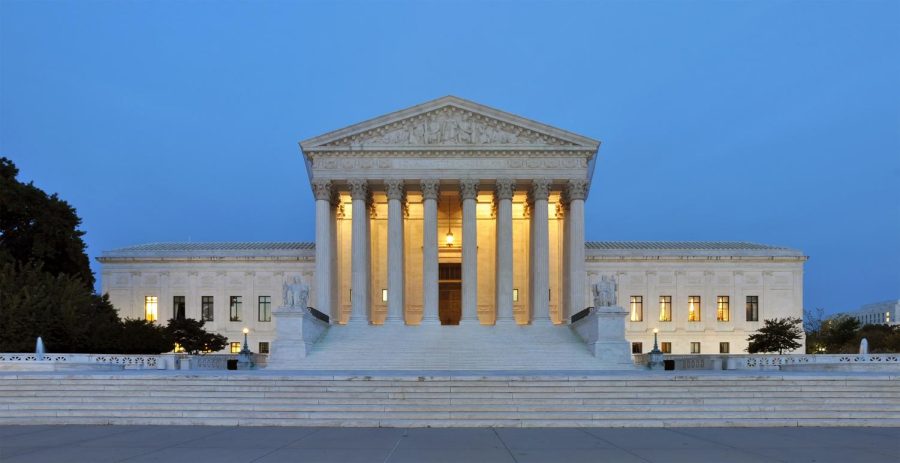The Year of SCOTUS
November 7, 2022
The Supreme Court of the United States (SCOTUS) has seemingly become one of the most pivotal parts of living in 21st century America. People across the country have found themselves in an era of landmark SCOTUS decisions, especially in 2022. Currently, the Supreme Court, led by Chief Justice John G. Roberts, is comprised of five conservative and three liberal associate justices. This June, the court made major decisions regarding gun control and female reproductive rights in just two days.
New York State Rifle & Pistol Association v. Bruen centered around a New York law active since 1913, requiring New York residents to hold a permit to carry a gun in public. Two men failed to have proper cause or “special need for carrying a gun in public”, as described by John Hopkins Bloomberg School of Public Health’s Joshua Sharfstein, and were denied permits, taking their case to the Supreme Court. With a 6-3 majority, the court ruled this law unconstitutional and in violation of the 14th and second amendments.
This officially establishes that the second amendment reserves the right to publicly carry firearms. However, the concurring opinion, written by Justice Kavenaugh, also stresses that individual states can take their own measures to regulate guns.
The very next day, the Supreme Court ruled 6-3 on Dobbs v. Jackson Women’s Health Organization, which centered around the constitutionality of a Missippi law banning most abortions after the fifteenth week of pregnancy, overturning past SCOTUS cases Roe v. Wade and Planned Parenthood v. Casey, officially leaving the legality of female abortion rights to individual state governments.
The American Civil Liberties Union, or ACLU, states that the decision “force[s] women and others who can become pregnant into a second-class status by denying them control over their bodies and their futures,” and addresses how “the impacts of pushing abortion out of reach fall disproportionately on the same women and other people who have always faced systemic barriers to care — communities of color, people living on low-incomes, undocumented immigrants, young people, the LGBTQ+ community, and people with disabilities.”
As these monumental SCOTUS decisions make history and impact every life across the country, teenagers and young adults in America are left wondering what this means for our futures. Since Dobbs v. Jackson Women’s Health Organization, the federal, constitutional right to safe and legal abortion has been abolished, while news stories focusing on the impact of the court’s decision, like that of a 10-year-old, Ohioan rape victim travelling across state lines for an abortion, have taken over the media.
After the case, many have worried just how far an individual state’s control over uterine reproductive health could reach, as new abortion bans are established. For more information and updates on abortion rights in individual states, visit https://reproductiverights.org/maps/abortion-laws-by-state/.
Alternatively, New York State Rifle & Pistol Association v. Bruen has altered state legislation by mandating “shall-issue” gun laws, which do not require a specialized need for owning a firearm, differing from “may-issue laws” like those of New York. This immediately impacts those who have access to concealed-carry licenses in the United States. Since the start of the year, 33,524 Americans have died at the hands of gun violence, as of October 2, 2022, per the independently sourced Gun Violence Archive. In 2021, there were a total of 45,069 gun violence deaths.
Still, the future of other historic, human rights-based SCOTUS decisions of the 20th century remains uncertain. And, as the Supreme Court reexamines the United States’ legal history, our country reevaluates what it means to be American.






